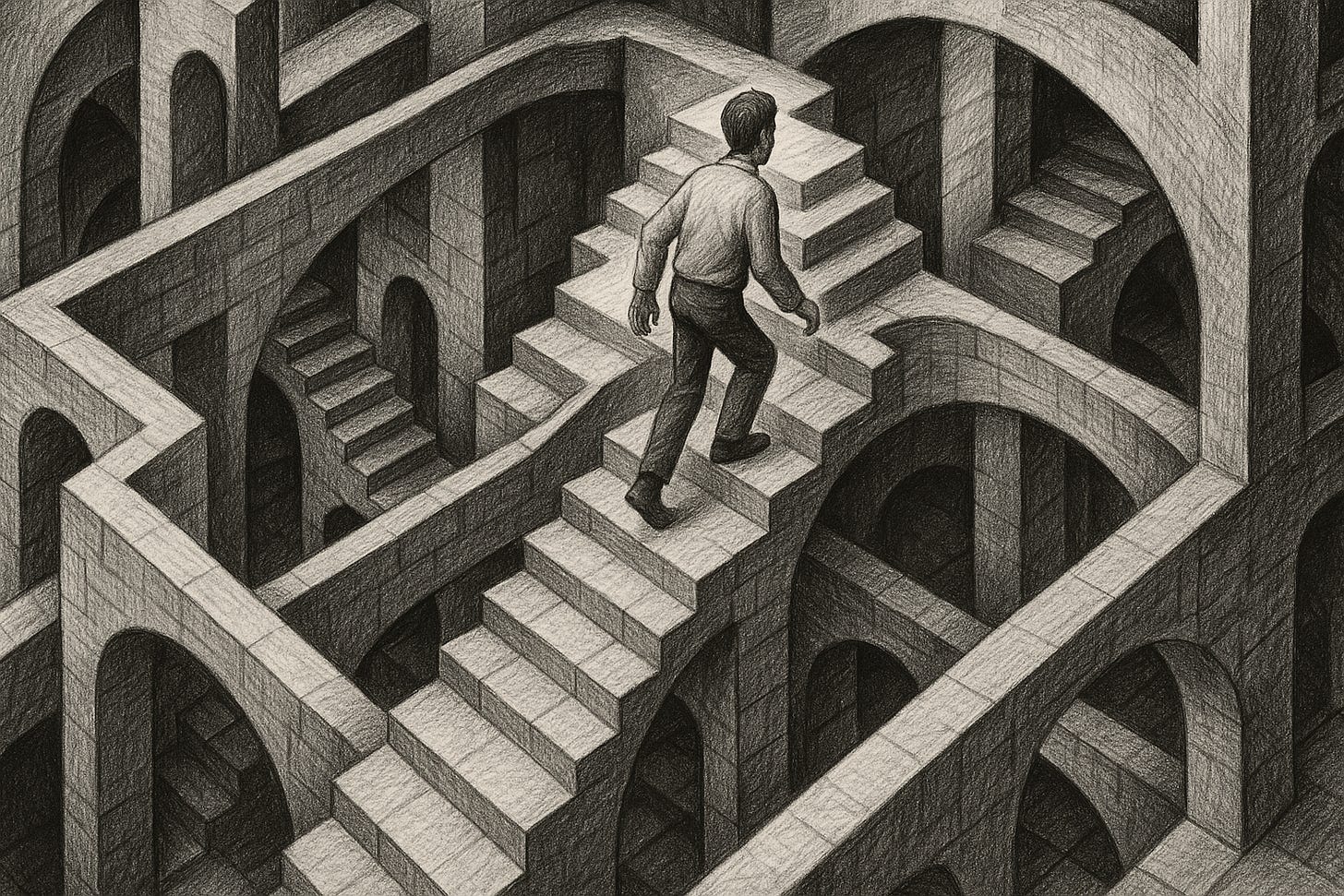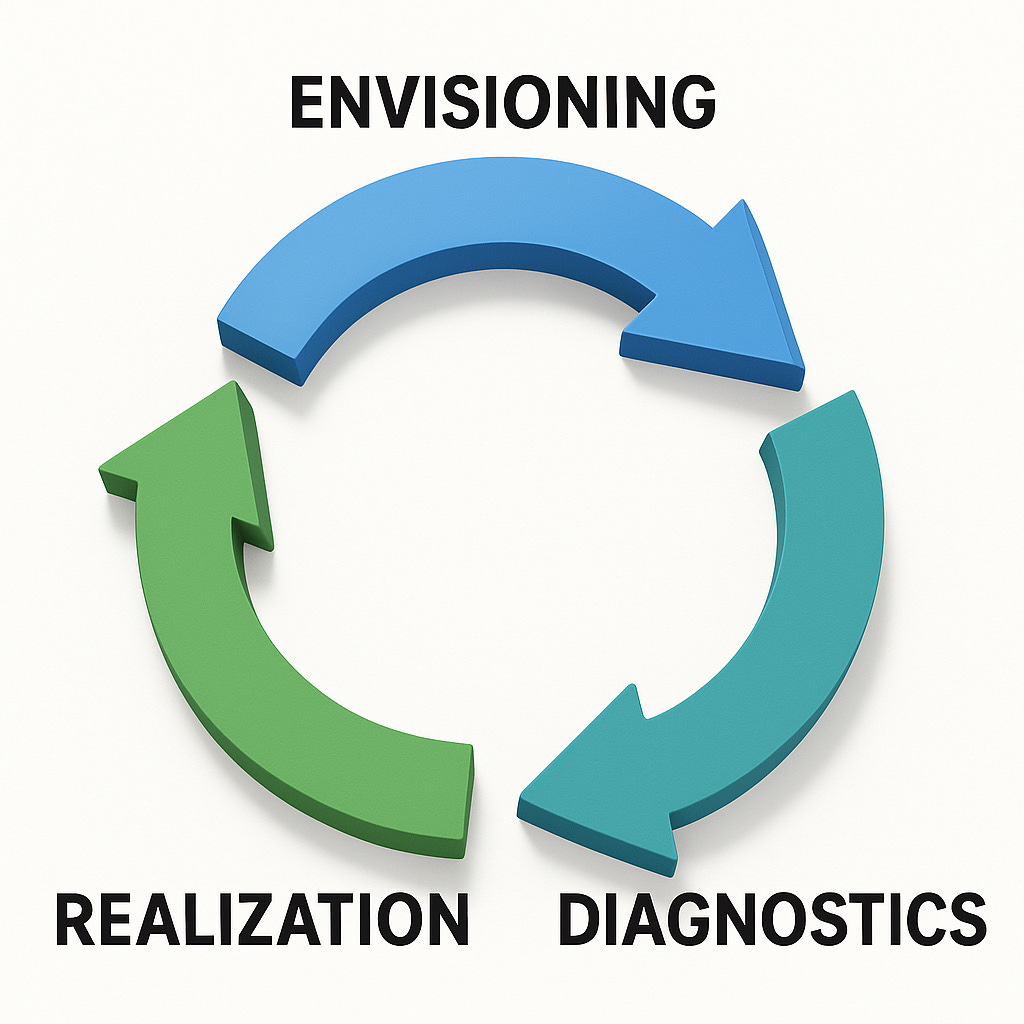From Skills Training to Continuous Human Growth
How to embed durable skills properly
I love our standard durable skills programs, but my favorite work with organizations is much more hands on.
Sometimes an organization wants to go beyond courses. They see the durable skills of their people as a differentiator, but also recognize that this will only happen if they can accurately measure these skills, and have an environment where they can grow.
In other words, they are serious.
That, in itself, is a huge win, because these organizations have largely moved beyond where most others are - trying to just hire their way out of the challenge or just blaming universities for sending them people who are “not ready”.
But what should a company do if they really want to differentiate their organization based on these capabilities?
Every engagement is a little different, but today I’ll give you a flavor of what this can look like.
There is a lot of detail in this, but every detail is needed to go from just checking the boxes in learning and development and to making a real difference.
The Starting Point - Commitment
I mentioned that some organizations are serious about improving the durable skills of their people, but early on it’s important to test the level of that commitment.
What we are talking about here is a form of human-centered transformation - the people equivalent of Digital Transformation initiatives that have been so important over the last decade or so.
Many different skills need to be developed and honed in this type of transformation, but one in our experience almost always rises above all others - adaptability. This is because in today’s world of work, the requirements on us aren’t just changing every ten years ago, or even every six months - they can change daily.
And in organizations that have undergone or are undergoing digital transformation, this need is even more acute.
And a key aspect of the commitment is an understanding that the responsibility for human-centered transformation is not just something for employees or students but for the whole organization. This type of transformation only works when the learners are surrounded by a supportive environment
The following diagram shows how these two elements work together - a layered set of capabilities for the learner, supported by the right environment and support at the organization.
This diagram can be used directly to measure commitment. Simply put, organizations who are only focused on the left side of the picture can help some individuals in their organization, particularly those who are already committed to personal growth. But organizations who are willing to focus on both sides of the diagram will maximize the value of their investment and actually realize the promise of becoming a human-centric organization.
The Approach - A Three Step Methodology for Human Growth
While the specifics vary a lot by organization, the same overall approach is absolutely possible in each case. We break it down into a simple methodology:
Now let’s look at each step.
Envisioning
Envisioning is mostly a top-down exercise. It is centered around the type of organization leaders are looking to build, and articulates a shared vision of what a truly human-centric organization looks like in their context.
Not all organizations are the same here. For example, some organizations place strong emphasis on continuity, and passing on wisdom between generations. Others index far more on their staff being the “value add layer” to their extensive technology investments.
This type of envisioning allows us to understand human-centricity not so much in terms of challenges, but more in terms of how, in an ideal state, the humans in their organization can be the difference maker, supporting the overall strategy of the organization.
It’s framing what a Human Operating System should look like.
Diagnostics
At the end of envisioning, we have a strong sense of what the future state is for people in the organization, and we even have an overall picture from leadership of current capabilities and the current environment that supports employee growth. But, critically, we are missing the employee perspective.
To fix this, we use diagnostics to round out the picture. Our durable skills assessment, and complimentary qualitative tools capture the current state of employee durable skills.
We also assess recruitment and hiring practices to gain a deep understanding of how new employees are brought into the environment, and we look at how existing learning and development programs are used.
And we capture the voice of the employee. Are there elements in the culture that are inhibiting growth? Are expensive existing programs actually useful? Are there simple tweaks that can improve an employees durable skills over time?
This type of diagnostic work always yields interesting results, because it illustrates where problems truly lie (at the individual, team, and organizational level), and it highlights low hanging fruit to improve human-centricity at minimal cost.
At the end of this phase, the organizations has a clear picture of both future and current state, plus a high level plan of how to bridge the gaps. This is almost always a combination of individual plus team development programs, combined with recommended changes to organizational processes, infrastructure and culture.
Realization
This is where the plan comes together and change actually happens, but the order of events is very important here. For example, focusing heavily on training employees before the right support structures are in place can be counter-productive.
The goal here is to connect skills to organizational structure, hiring practices and culture. We are not just training employees, but embedding core skills into the everyday fabric of how the organization operates.
Human-development programs supporting this change are designed to match the specific requirements of the organization, and are pared with ongoing measurement to show progress, and identify unintended consequences.
And each program is designed for it’s audience, so for example early in career professionals will receive different types of programming than their leaders, but all programs are centered around a common goal - creating a highly adaptable organization of people who drive the organization’s growth.
Yes, It Is Continuous
One of the questions I’m most often asked here is “How will we know when we are done?”
And I’m afraid I don’t have great news in my answer.
“You are never done”.
The point here is that in a work world that is constantly changing, the humans doing it are continuously changing too, with their skills improving in some areas and fading in others through lack of daily use.
Rather, organizations should think of this type of work as moving from a high growth phase, where human skills are being actively developed to address gaps, to a slightly lower growth phase, were they are being actively sustained and improved to keep the organization relevant.
That is absolutely possible as long as organizations sustain their commitment.
Is All This Worth It?
Let’s face it. What I just described is a lot of work. It’s a lot easier to just buy a course catalog like LinkedIn Learning or Coursera and see what happens.
But it’s important to remember that most organizations spend large amounts of money today addressing the consequences of NOT helping their employees learn and grow. Lack of growth opportunities are a huge reason why talented people leave organizations, and they also contribute hugely to quiet quitting and burnout.
Richard Branson famously said “Train people well enough so they can leave, treat them well enough so they don’t want to.” What I’ve outlined here is a blueprint to do that properly.
Remember that as work evolves - creating human-centric organizations is not just a nice to have any more.
It’s a matter of survival.





